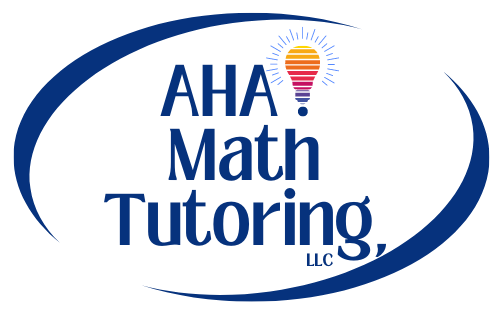10 Easy Ways to Make Middle School Math Fun at Home
Think back to the last time your child had math homework. Was helping them with their homework a fun experience? Probably not. Transforming middle school math from a dreaded subject into something fun is actually possible! You just need to start with a bit of creativity and enthusiasm. As parents, you have the power to make math concepts come alive for your 6th, 7th, and 8th graders. Let’s dive into ten enriched strategies that promise not just to educate but to entertain.


#1 Incorporate Math Games
Games make learning unforgettable. Think beyond traditional board games to include math-focused games that you can play anywhere. Grab a deck of cards and play ‘War’ – it’s an original math game that can be played with addition, subtraction, division, multiplication, and using fractions. Let’s explore the fraction version of WAR –
Two players deal two cards each – a numerator and a denominator. Determine which fraction is the largest and the winner keeps all four cards. Keep playing until the cards are gone.
Need another card game idea? If you haven’t heard of “Math 24”, I highly recommend checking it out. Here’s a basic instruction on how to use the order of operations to get to 24 –
Each player receives 4 cards. Use the order-of-operations rules to get to a number as close to twenty-four as possible!
A deck of cards isn’t the only way to incorporate math games at home. Online platforms like Cool Math Games offer a plethora of options tailored to middle school math concepts, ensuring practice feels like play. Prodigy is another great online platform that helps students boost their achievement in a game-like format. Also, check out these math tasks from youcubed.org for a variety of fun math problems.

#2 Nothing Beats Real-Life Scenarios
Real-life applications of math teach children the value of their lessons outside the classroom. Involve them in planning a family budget, understanding the geometry of sewing patterns, or even calculating the time it takes to travel to their favorite destinations. If you’re re-doing the floors in your living room, involve them in the process of mapping out the area and getting an estimated cost of your new flooring. Both Home Depot and Lowe’s offer pricing calculators to get a base cost but it’s more fun if you include your middle schooler in the process. These activities make math tangible and significantly more interesting.
#3 Creative Arts & Crafts
Just because they’re in middle school now doesn’t mean they can’t do some arts and crafts! Tap into the creative minds of middle schoolers by integrating math into arts and crafts. Geometry takes a front seat when you challenge them to create tessellations or 3D geometric shapes out of paper. Origami is another excellent way to explore concepts of symmetry and fractions, turning a math lesson into an art project.
#4 Let Them Have (Some) Tech Time
While online platforms were mentioned above, apps like DragonBox cover algebra in a way that feels more like solving puzzles than doing homework. Photomath is another great app that helps students solve complex math problems by scanning an image of the equation and then breaking it down into step-by-step explanations to make it easier to understand. Websites offering interactive lessons and problems can make the abstract concepts of algebra and geometry much more digestible for young minds, as well.
#5 Get Physical
Incorporate physical activity into learning to keep energy levels high. For example, create a treasure hunt where each clue involves solving a math problem, or set up a mini-Olympics where each sport (like long jump or relay) involves calculating scores or averages. This method promotes learning through kinesthetic activity, ideal for energetic learners.

#6 Kitchen Math
While cooking may be a great bonding activity, it’s also an opportunity to reinforce math! Baking is a science reliant on math while cooking allows you to experiment more. Both offer endless opportunities to discuss fractions, measurement, and conversion.
Challenge your child to double a recipe (introducing concepts of multiplication and addition) or to convert measurements from cups to milliliters.
Discussing the chemistry behind baking can also segue into practical math applications.
#7 Puzzles can be Mathematical
Sudoku, KenKen, and nonograms are excellent for logical thinking and problem-solving. There’s even a math-focused Wordle-style game called Nerdle. These puzzles vary in difficulty, making them perfect for a quick math session that stimulates the brain and introduces new patterns and logic strategies.
#8 Celebrate Math in Everyday Life
Keep an eye out for math in the real world and point it out to your child. Discuss how architects use geometry to design buildings or how meteorologists use statistics to predict the weather. This ongoing conversation about math’s presence in daily life can spark interest and curiosity.
#9 Learn to Play a Musical Instrument
Learning a musical instrument offers middle schoolers a unique way to engage with math. From counting beats to understanding ratios in scales and chords, music inherently involves mathematical concepts.
Through practice and ensemble play, students develop mathematical precision and problem-solving skills while fostering creativity and self-expression.
Music is a universal language that offers middle schoolers a rich opportunity to deepen their mathematical understanding while fostering creativity and collaboration.
#10 Set Up a Reward System
A reward system can motivate your child to embrace math practice. Does this sound like bribery? Sure but these days we call it “positive reinforcement” and it works! For instance, earning points towards a larger reward can make the completion of math exercises or games more appealing. The bigger the reward, the more appealing math becomes. But, remember: it’s important to balance rewards with the intrinsic motivation of overcoming challenges and learning new skills.
Do MORE with Math
By extending math learning beyond textbooks and embracing these interactive, fun, and educational strategies, you’re not only helping your child understand and enjoy middle school math but also fostering a love for learning that will last a lifetime. Remember, the goal is to make math feel less like a task and more like an adventure that you and your child embark on together. So, gather your resources, embrace the fun, and watch as math becomes one of the most anticipated subjects in your household.

About the Author
Crystal Paul
Let's Learn Together!
I’m on a mission to empower students to embrace challenges and cultivate a belief in themselves that they can learn and grow! If you’re ready to help your middle schooler rewrite the narrative around their math education, schedule a free 15-minute consultation to learn how virtual math tutoring can help.
